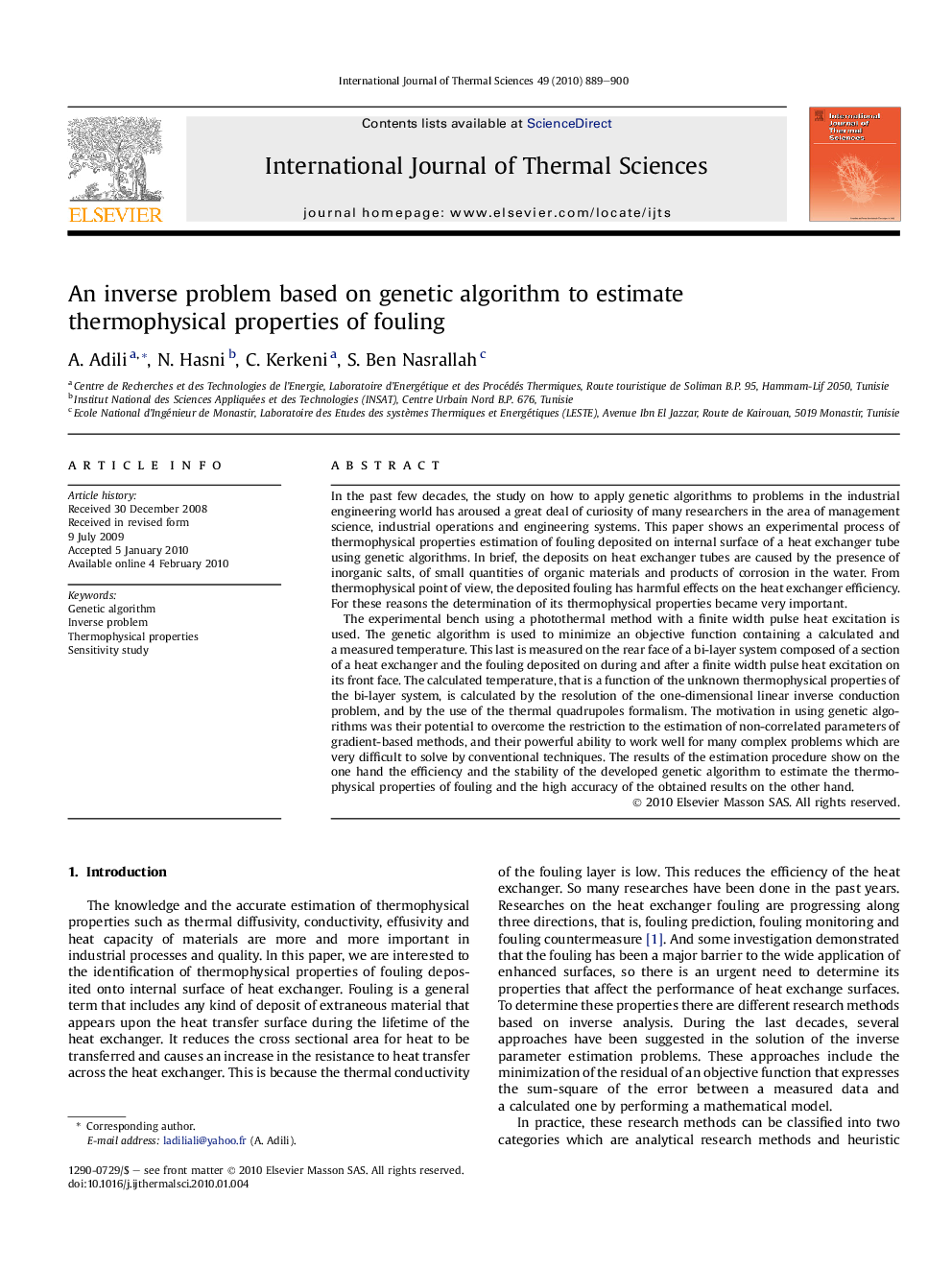| کد مقاله | کد نشریه | سال انتشار | مقاله انگلیسی | نسخه تمام متن |
|---|---|---|---|---|
| 669113 | 1458790 | 2010 | 12 صفحه PDF | دانلود رایگان |
عنوان انگلیسی مقاله ISI
An inverse problem based on genetic algorithm to estimate thermophysical properties of fouling
دانلود مقاله + سفارش ترجمه
دانلود مقاله ISI انگلیسی
رایگان برای ایرانیان
کلمات کلیدی
موضوعات مرتبط
مهندسی و علوم پایه
مهندسی شیمی
جریان سیال و فرایندهای انتقال
پیش نمایش صفحه اول مقاله

چکیده انگلیسی
The experimental bench using a photothermal method with a finite width pulse heat excitation is used. The genetic algorithm is used to minimize an objective function containing a calculated and a measured temperature. This last is measured on the rear face of a bi-layer system composed of a section of a heat exchanger and the fouling deposited on during and after a finite width pulse heat excitation on its front face. The calculated temperature, that is a function of the unknown thermophysical properties of the bi-layer system, is calculated by the resolution of the one-dimensional linear inverse conduction problem, and by the use of the thermal quadrupoles formalism. The motivation in using genetic algorithms was their potential to overcome the restriction to the estimation of non-correlated parameters of gradient-based methods, and their powerful ability to work well for many complex problems which are very difficult to solve by conventional techniques. The results of the estimation procedure show on the one hand the efficiency and the stability of the developed genetic algorithm to estimate the thermophysical properties of fouling and the high accuracy of the obtained results on the other hand.
ناشر
Database: Elsevier - ScienceDirect (ساینس دایرکت)
Journal: International Journal of Thermal Sciences - Volume 49, Issue 6, June 2010, Pages 889-900
Journal: International Journal of Thermal Sciences - Volume 49, Issue 6, June 2010, Pages 889-900
نویسندگان
A. Adili, N. Hasni, C. Kerkeni, S. Ben Nasrallah,